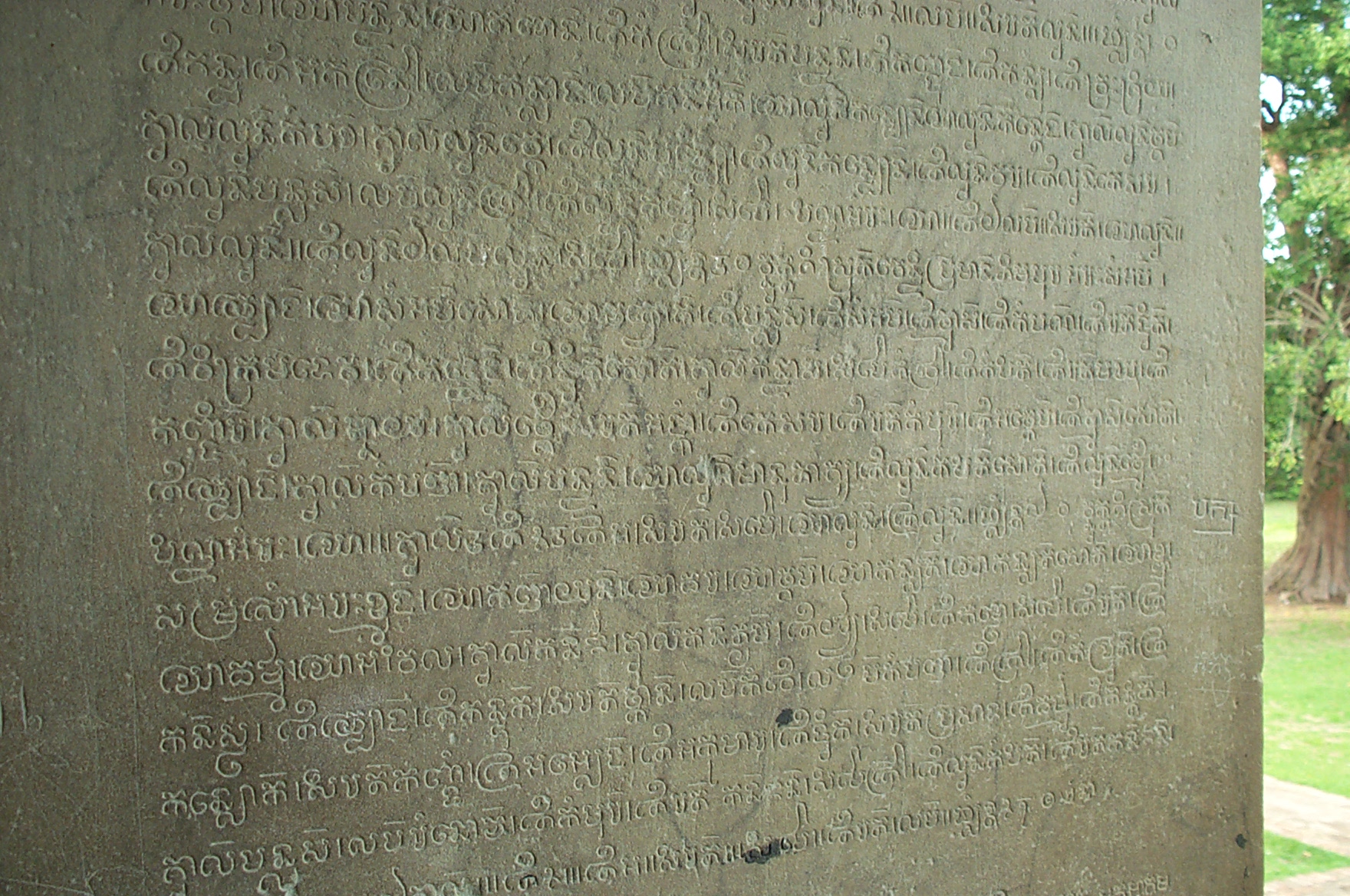|
Pali
Pali () is a Middle Indo-Aryan liturgical language native to the Indian subcontinent. It is widely studied because it is the language of the Buddhist '' Pāli Canon'' or '' Tipiṭaka'' as well as the sacred language of '' Theravāda'' Buddhism.Stargardt, Janice. ''Tracing Thoughts Through Things: The Oldest Pali Texts and the Early Buddhist Archaeology of India and Burma.'', Royal Netherlands Academy of Arts and Sciences, 2000, page 25. Early in the language's history, it was written in the Brahmi script. Origin and development Etymology The word 'Pali' is used as a name for the language of the Theravada canon. The word seems to have its origins in commentarial traditions, wherein the (in the sense of the line of original text quoted) was distinguished from the commentary or vernacular translation that followed it in the manuscript. K. R. Norman suggests that its emergence was based on a misunderstanding of the compound , with being interpreted as the name of a particu ... [...More Info...] [...Related Items...] OR: [Wikipedia] [Google] [Baidu] |
Pali Canon
The Pāli Canon is the standard collection of scriptures in the Theravada Buddhist tradition, as preserved in the Pāli language. It is the most complete extant early Buddhist canon. It derives mainly from the Tamrashatiya school. During the First Buddhist Council, three months after the parinibbana of Gautama Buddha in Rajgir, Ananda recited the Sutta Pitaka, and Upali recited the Vinaya Pitaka. The Arhats present accepted the recitations and henceforth the teachings were preserved orally by the Sangha. The Tipitaka that was transmitted to Sri Lanka during the reign of King Asoka were initially preserved orally and were later written down on palm leaves during the Fourth Buddhist Council in 29 BCE, approximately 454 years after the death of Gautama Buddha. The claim that the texts were "spoken by the Buddha", is meant in this non-literal sense. The existence of the bhanaka tradition existing until later periods, along with other sources, shows that oral tradit ... [...More Info...] [...Related Items...] OR: [Wikipedia] [Google] [Baidu] |
Buddhism
Buddhism ( , ), also known as Buddha Dharma and Dharmavinaya (), is an Indian religion or philosophical tradition based on teachings attributed to the Buddha. It originated in northern India as a -movement in the 5th century BCE, and gradually spread throughout much of Asia via the Silk Road. It is the world's fourth-largest religion, with over 520 million followers (Buddhists) who comprise seven percent of the global population. The Buddha taught the Middle Way, a path of spiritual development that avoids both extreme asceticism and hedonism. It aims at liberation from clinging and craving to things which are impermanent (), incapable of satisfying ('), and without a lasting essence (), ending the cycle of death and rebirth (). A summary of this path is expressed in the Noble Eightfold Path, a training of the mind with observance of Buddhist ethics and meditation. Other widely observed practices include: monasticism; "taking refuge" in the Buddha, the , and the ... [...More Info...] [...Related Items...] OR: [Wikipedia] [Google] [Baidu] |
Theravada
''Theravāda'' () ( si, ථේරවාදය, my, ထေရဝါဒ, th, เถรวาท, km, ថេរវាទ, lo, ເຖຣະວາດ, pi, , ) is the most commonly accepted name of Buddhism's oldest existing school. The school's adherents, termed Theravādins, have preserved their version of Gautama Buddha's teaching or ''Buddha Dhamma'' in the Pāli Canon for over two millennia. The Pāli Canon is the most complete Buddhist canon surviving in a classical Indian language, Pāli, which serves as the school's sacred language and ''lingua franca''.Crosby, Kate (2013), ''Theravada Buddhism: Continuity, Diversity, and Identity'', p. 2. In contrast to '' Mahāyāna'' and '' Vajrayāna'', Theravāda tends to be conservative in matters of doctrine ('' pariyatti'') and monastic discipline (''vinaya''). One element of this conservatism is the fact that Theravāda rejects the authenticity of the Mahayana sutras (which appeared c. 1st century BCE onwards). Modern Ther ... [...More Info...] [...Related Items...] OR: [Wikipedia] [Google] [Baidu] |
Thai Script
The Thai script ( th, อักษรไทย, ) is the abugida used to write Thai, Southern Thai and many other languages spoken in Thailand. The Thai alphabet itself (as used to write Thai) has 44 consonant symbols ( th, พยัญชนะ, ''phayanchana''), 16 vowel symbols ( th, สระ, ''sara'') that combine into at least 32 vowel forms and four tone diacritics ( th, วรรณยุกต์ or วรรณยุต, or ) to create characters mostly representing syllables. Although commonly referred to as the "Thai alphabet", the script is in fact not a true alphabet but an abugida, a writing system in which the full characters represent consonants with diacritical marks for vowels; the absence of a vowel diacritic gives an implied 'a' or 'o'. Consonants are written horizontally from left to right, and vowels following a consonant in speech are written above, below, to the left or to the right of it, or a combination of those. History The Thai alphabet is de ... [...More Info...] [...Related Items...] OR: [Wikipedia] [Google] [Baidu] |
Tripiṭaka
''Tipiṭaka'' () or ''Tripiṭaka'' () or ''තිපිටක'' (), meaning "Triple Basket", is the traditional term for ancient collections of Buddhist sacred scriptures. The Pāli Canon maintained by the Theravāda tradition in Southeast Asia, the Chinese Buddhist Canon maintained by the East Asian Buddhist tradition, and the Tibetan Buddhist Canon maintained by the Tibetan Buddhist tradition are some of the most important ''Tripiṭaka'' in contemporary Buddhist world. ''Tripiṭaka'' has become a term used for many schools' collections, although their general divisions do not match a strict division into three piṭakas.Mizuno, ''Essentials of Buddhism'', 1972, English version by Ritik Bhadana, Tokyo, 1996 Etymology ''Tripiṭaka'' (Sanskrit: त्रिपिटक), or ''Tipiṭaka'' (Pāli), means "Three Baskets". It is a compound Sanskrit word of ''tri'' (त्रि) or Pāli word ''ti'', meaning "three", and ''piṭaka'' (पिटक) or ''piṭa' ... [...More Info...] [...Related Items...] OR: [Wikipedia] [Google] [Baidu] |
Khmer Script Khmer script ( km, អក្សរខ្មែរ, )Huffman, Franklin. 1970. ''Cambodian System of Writing and Beginning Reader''. Yale University Press. . is an abugida (alphasyl |



.jpg)

